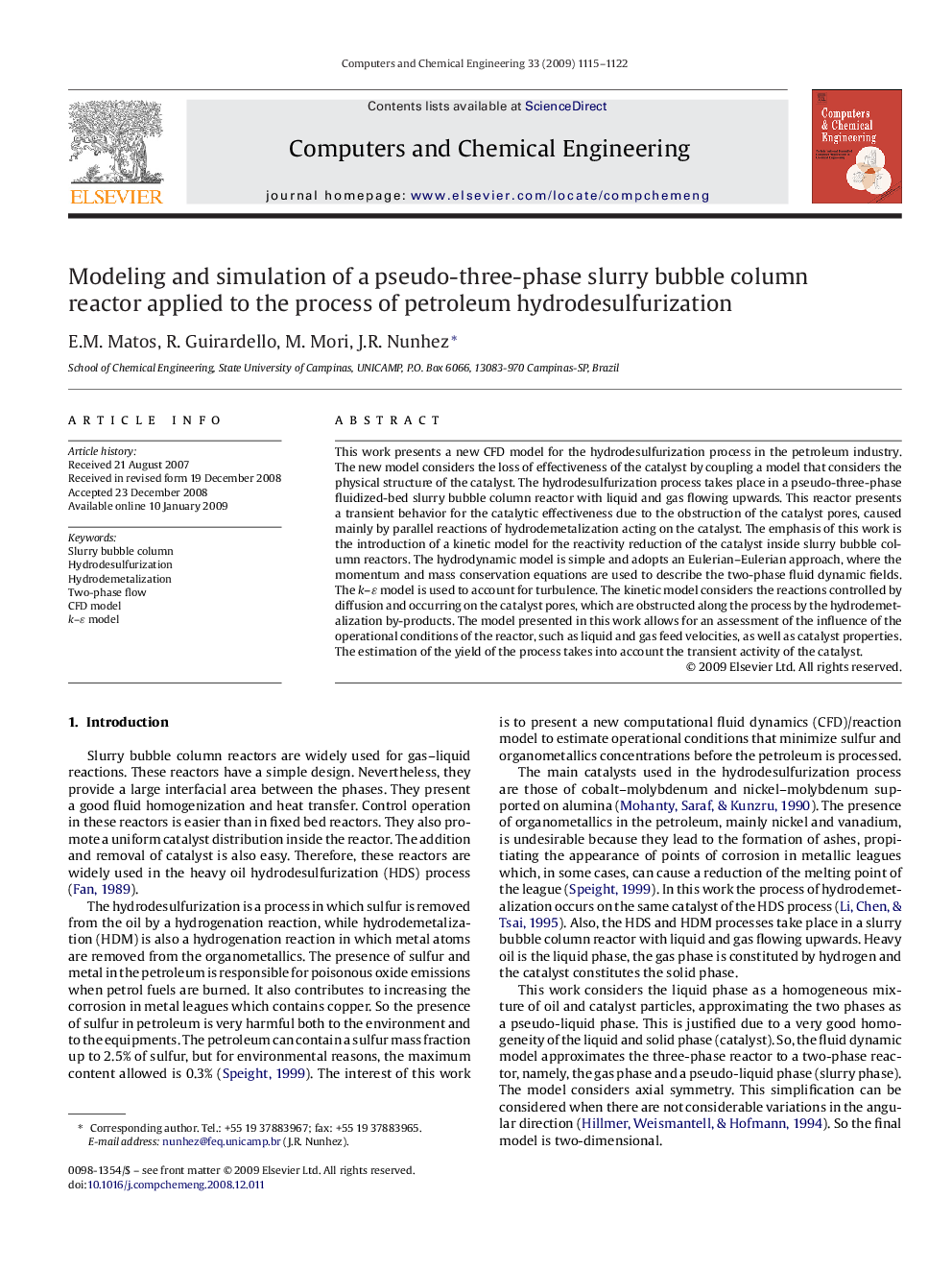| Article ID | Journal | Published Year | Pages | File Type |
|---|---|---|---|---|
| 173585 | Computers & Chemical Engineering | 2009 | 8 Pages |
This work presents a new CFD model for the hydrodesulfurization process in the petroleum industry. The new model considers the loss of effectiveness of the catalyst by coupling a model that considers the physical structure of the catalyst. The hydrodesulfurization process takes place in a pseudo-three-phase fluidized-bed slurry bubble column reactor with liquid and gas flowing upwards. This reactor presents a transient behavior for the catalytic effectiveness due to the obstruction of the catalyst pores, caused mainly by parallel reactions of hydrodemetalization acting on the catalyst. The emphasis of this work is the introduction of a kinetic model for the reactivity reduction of the catalyst inside slurry bubble column reactors. The hydrodynamic model is simple and adopts an Eulerian–Eulerian approach, where the momentum and mass conservation equations are used to describe the two-phase fluid dynamic fields. The k–ɛ model is used to account for turbulence. The kinetic model considers the reactions controlled by diffusion and occurring on the catalyst pores, which are obstructed along the process by the hydrodemetalization by-products. The model presented in this work allows for an assessment of the influence of the operational conditions of the reactor, such as liquid and gas feed velocities, as well as catalyst properties. The estimation of the yield of the process takes into account the transient activity of the catalyst.
